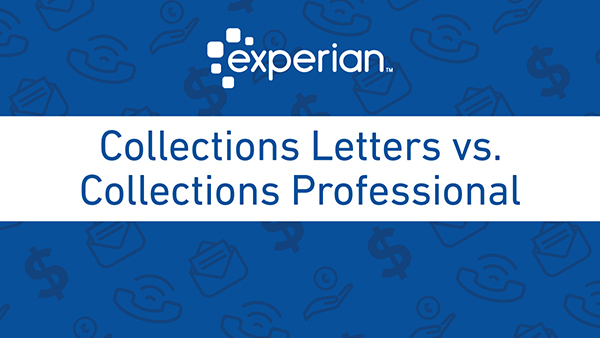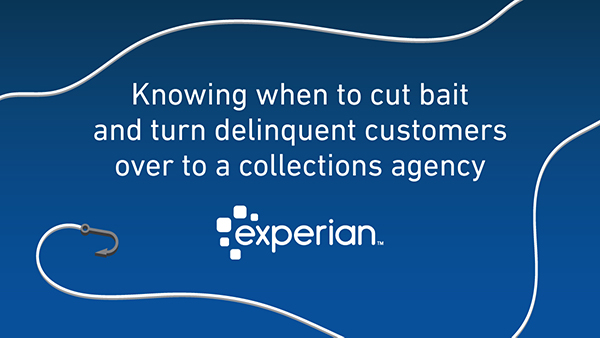Tag: collections

This weeks guest post is by Katie Keitch, VP of Commercial Services at InsideARM. InsideARM is a media company who specializes in training for credit management professionals. To receive future articles, sign up to the InsideARM newsletter. Katie Keich, V.P. Commercial Services InsideARM It's 2019, we have IVR systems that sound like you are talking to a human. We have AI technology that can analyze and form collections treatment. We can process payment via SMS messaging. Is it silly to think that the "right" letter strategy could possibly outperform a live collector? A letter series is delivered most commonly today using e-mail and/or through the customer's account portal. Let's dig in. In my travels and conversations, a very succinct theme is the question, "Who collected the money? Did my collector's efforts bring in the cash? Or was it something else?" Often businesses can't be 100% sure if it was a collector's efforts that brought the money in or not. Did the customer just pay the bill on their own because they suddenly could afford to? How much of the money was recovered by no one making a call? Could a letter strategy replace a collector, or should it enhance the collector's efforts? These questions are normal things to consider. As a credit and collections leader, I think it's always important to give your collectors the ability to utilize as many resources and tools to enhance their efforts. Step One: Is your current letter strategy set up to aid the collector's efforts or compete with the collector? Are you using the letter strategy in tandem with a collector's dials or instead of their dials? You must decide if a letter series is going to replace the collector's efforts or if it is going to be assisting there collection efforts. Quick Exercise: If you'd like to put your collectors' efforts to the test, discontinue the use of customer touches via letter strategy. Create an escalated letter series that runs without a collector making a phone call. I would measure it for 60, 90, and 120 days and measure the collector's recovery rate. Is the collector performing at lower, higher or the same rate of recovery? How did the customers that never got phone calls and only got the letter series perform? How much cash came in without a collector calling? Step Two: Is your current letter strategy saying the same thing each time or does it have escalated intent in the verbiage? If you want to make the most of your letter series, they should look and sound different. Letter 1- Should be sent about a week before the invoice is due and include a copy of the invoice. This way, if they lost or didn't receive, the invoice for the first time, you are automatically re-sending. Letter 2- Should be sent a week after the invoice is due, notifying the customer you haven't received payment. If they want to avoid late fees, maximize discounts with you, etc. they should process payment immediately online. If you are sending this via email or pop-up message on their portal, the link should be included to process payment. Automatically offer the customer the discounted rate if they process payment before end of business day. If you don't have a payment portal, honor the discounted pricing with payment process via phone that day. Letter 3- Should be sent approximately 10 business days after letter 2 if payment still hasn't been received. You should be mentioning possible service interruption, loss of discounts and/or late fees if unresolved. You want it to be clear that the account is in jeopardy of service interruption if not resolved within 5 business days. Step Three: Does your letter strategy have dates and accountability? You want to ensure that urgency can be read in the tone and verbiage chosen. It shouldn't be open ended, and it should always offer the customer the ability to resolve the delinquency. If they haven't filed an invoice dispute with you by now, that's a problem. If you don't receive the payment be prepared to temporarily disrupt service. Letter 4- Should be sent approximately 5 business days after letter 3 if payment hasn't been received. You should include a date for service interruption, loss of discounts and/or late fees, and mention reporting the delinquency to the credit bureaus. Quick tip: If you want the customer to make you a priority than you should be reporting your delinquent customers monthly. You can set up to automatically send an aging report to the credit report providers. This is a great tool to help the customer in making you a priority for payment. Step Four: Does your letter series clearly communicate the penalties if payment is delinquent after service interruption? Does the customer understand if you have to send them to a third-party collection agency that they will incur additional costs? Letter 5- Should be sent 5 business days after letter 4. It should include an incentive to pay you immediately. However, it should clearly state if payment isn't received the incurred actions taken and fees associated. This should be your final demand for payment. My recommendation is for the letter strategy to be used in addition to collector calls. If you want to maximize the efforts of your collectors than you should use a dual strategy. Many organizations use a dual strategy today but don't sleep on the fact that you could have a very effective letter series, if developed and executed properly. Business Chat | LIVE Watch the interview we did with Katie Keich of InsideARM on best practices in planning your first collections call with your delinquent customer.

This weeks guest post is by Katie Keitch, VP of Commercial Services at InsideARM. InsideARM is a media company that specializes in training for credit management professionals. To receive future articles sign up to the InsideARM newsletter. Oftentimes organizations miss out on higher bad debt recoveries. The number one reason this happens is that they hold on to the debt for too long. It’s important in the onboarding process to start with the end in mind: setting yourself up for success by having mutually agreed payment terms, billing cycle, right party contact information, etc. However, even if you have done that all correctly from the start, some customers, unfortunately, aren’t able to pay for one reason or another. Here’s how to know when to cut bait and enlist the help of a 3rd party collections agency. Don’t ignore the warning signs Your customer isn’t paying within the agreed payment terms. Or maybe they were paying on time, but lately they have been pushing farther and farther out. Your customer is showing past due more often and/or farther past due than historically Your customer hasn’t paid you in the last 45+ days Your customer is 60+ day’s past due to their mutually agreed payment terms Your customer made broken promises to pay Your customer stopped taking your phone calls Your customer’s emails are suddenly not going through or the physical mailing address is returning mail to sender Be proactive in your communication Don’t be afraid to ask how things are going, especially if you noticed they are outside their normal payment cycle. Immediately offer alternative options instead of having to pay you the full past-due amount today. Set the expectation that it’s vitally important that they keep the communication lines open. If they have something come up, they need to call you. And always answer your calls. You have to be blunt and purposeful in your approach here so that they understand the commitment to you. Offer some alternative options While it’s so important that your customer takes your calls, it’s equally important to give them attainable goals. If they feel that they have options, they are more likely to keep the lines of communication open. Alternative options might include things like offering the ability to make a small weekly payment towards the balance. Offer your customer the ability to continue doing business with you while making payments. The best way to accomplish this is to set the expectation they must remain current on the new invoices. Make the weekly payments smaller so they are able to keep to the commitment. Your customer can always call you and make additional payments. However, it's important that they stick to their original commitment. Ask your customer what is the dollar amount they can afford to pay weekly (hopefully automatically)? If the dollar amount is less than their normal spend, this is a sign that they can’t stay active as a customer. Give them the option to use alternative vendors until they can cover their average invoices plus the delinquent amount. Your stakeholders in Sales may not be immediately supportive. but they will thank you in the long run. Especially if they have chargebacks or are commissioned on collected revenue. Last, in my experience, customers appreciate that you recognize and don’t want to see them get to a place of debt they can't repay. The snowball effect of continuing to let a customer who can’t pay continue billing can be detrimental. No one wins, if your customer files for bankruptcy or worse, go out of business. Recommended exercise, review customers that haven’t made a payment to you in the last 45 days. These should be a top priority for collections. Make your goal to be first in line not last Don’t miss out on collecting because you waited too long to send an account. If you are working with a 3rd party collections agency, do you have an easy process for your collector to recognize it’s time to cut bait? Are the collectors being trained to recognize the warning signs and make quicker decisions? Don’t let your customers get into the 90 and 120-day buckets. They should already be with your third-party agency at that point. That is if you want an opportunity to recover the debt and fast. If you are using the steps outlined above, you should be seeing higher recoveries.
